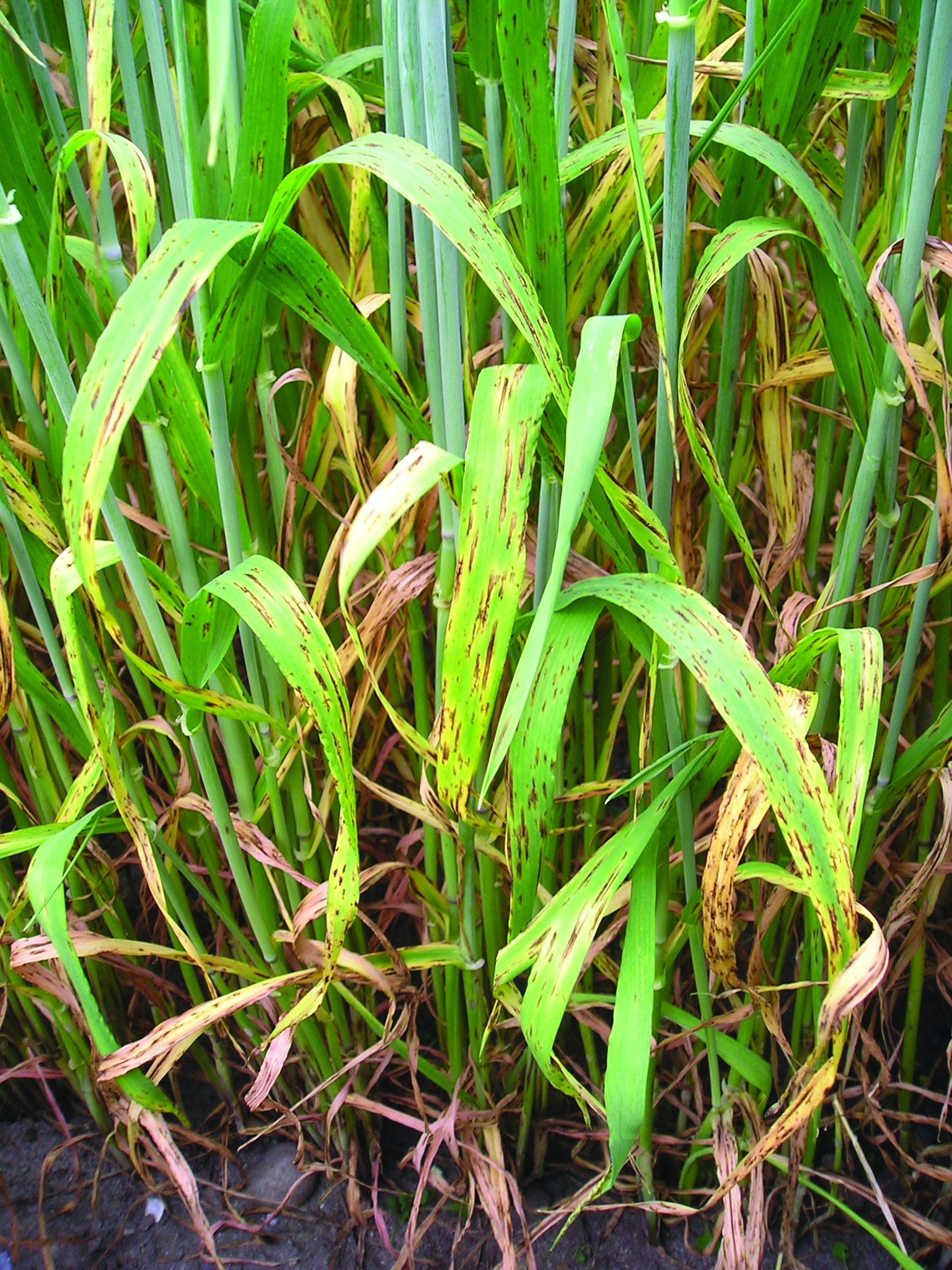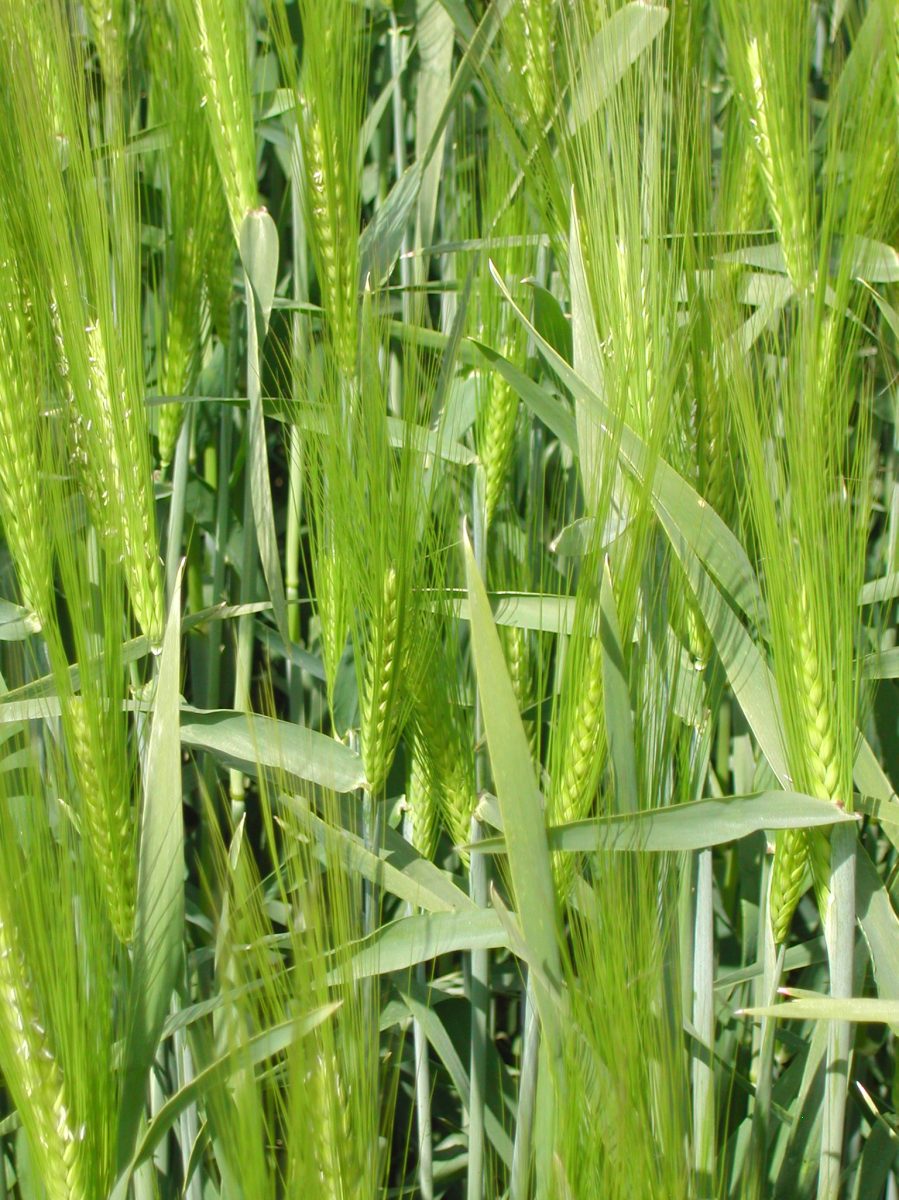Managing barley diseases
 Although it’s still possible to achieve good levels of disease control in UK barley crops, there’s evidence to suggest the efficacy of some modes of action is being eroded by increasing disease resistance. This article promotes the responsible use of a range of modes of action in order to take the pressure off ‘at-risk’ actives and provide early control of diseases such as ramularia, rhynchosporium and net blotch
Although it’s still possible to achieve good levels of disease control in UK barley crops, there’s evidence to suggest the efficacy of some modes of action is being eroded by increasing disease resistance. This article promotes the responsible use of a range of modes of action in order to take the pressure off ‘at-risk’ actives and provide early control of diseases such as ramularia, rhynchosporium and net blotch
Savvy selection eases pressure
Managing barley diseases without undue selection pressure on fungicides can be a tricky task. CPM gets an update on the resistance situation and fungicide options that can help take the pressure off SDHIs and azoles.
The use of multisite chemistry makes it harder for pathogens to mutate.
By Lucy de la Pasture
Even though the area of barley has declined considerably over the years, there’s been a modest increase over the last few years in the UK, where the total barley area stood at 1.2 million ha in 2018 (Defra). Increasing barley yields have been supported by high levels of fungicide use, which reflects poor disease resistance in some popular varieties as well as a preventative approach to managing disease.
Robust fungicide programmes put more selection pressure on barley disease pathogens and there have been shifts in sensitivity across the disease spectrum, with ramularia in particular causing concern. Andy Bailey, Adama’s fungicide technical specialist, explains the current state of play with the different groups of chemistry and their role in controlling barley diseases.

Net blotch needs less moisture than rhynchosporium so can also be problematic during humid spells later in the season.
What are the main barley diseases?
The blotch and spot diseases – rhynchosporium, net blotch and ramularia – are the key challenges in barley and the drivers for fungicide programmes. Although good disease control can still be achieved in the field, it’s essential to use comprehensive anti-resistance strategies to slow down the development of resistance and preserve the efficacy of existing chemistry, as well as protect new active ingredients in the pipeline. That means it’s important to be mindful of overusing SDHIs and azoles, even though they’re still mainly effective, and make use of the range of different modes of action (MoA) still available in barley.
For example, prothioconazole is useful against powdery mildew, but there’s an opportunity to diversify the MoA with several fungicides (eg cyprodinil, metrafenone, proquinazid, cyflufenamid) giving effective protection and morpholines or spiroxamine to provide curative activity when the disease is established. For rust diseases strobilurin chemistry provides an effective option as an alternative to SDHI or azoles, even though they both still have very high levels of performance in controlling the rust diseases.
What harm do they do?
Foliar diseases cause loss of green leaf area, reducing the plant’s photosynthetic capability and consequently yield. Rhynchosporium is the most damaging disease of barley in the north and west, and at GS31-32, visible levels of disease of just 1–2% will result in an economic loss if left untreated. AHDB estimated a national yield loss of £7.2 million (at £150/t) in 2005 due to rhynchosporium infection despite fungicide treatment.
Net blotch can also cause large losses when left uncontrolled and early infections from trash-borne inoculum pose the biggest threat to yield. According to AHDB, a national yield loss of £10.2 million (at £150/t) occurred in 2005 despite treatment.
Yield losses from ramularia are lower than the blotch diseases at approx. 0.5t/ha but infection can drastically affect grain quality, particularly by increasing the screenings in malting barley samples. One of the major differences to the other blotch diseases is that ramularia remains asymptomatic until late in the season when environmental triggers or stresses may occur, so you don’t know it’s going to become a problem at fungicide timings.
How easy are they to control?
Net blotch isolates with decreased sensitivity to SDHIs were first detected in 2013 and there continues to be a gradual shift in the population. Even though SDHI/azole mixtures are still providing good performance in the field, the appearance of new mutations (D-H134R, C-S135R and C-H134R) and a shift in sensitivity is something to bear in mind when formulating fungicide strategies. The azoles have had fluctuations in sensitivity between years but are regarded as stable, with prothioconazole performing well in recent years. Strobilurins offer variable control of net blotch, at best, since the F129L mutation occurred several years ago.
The ramularia pathogen presents the most significant challenge to current chemistry having developed strains which have overcome all of the single-site MoAs – strobilurins, azoles and SDHIs.
What other chemical options are there?
For rhynchosporium control cyprodinil provides an alternative MoA for inclusion within fungicide programmes, with good activity against rhynchosporium and stable performance in the field. Multisites, such as folpet, provide good protectant activity with a very low risk of resistance developing.
Cyprodinil also has activity on net blotch, providing an alternative MoA which can be used at either the T1 or T2 spray timing. This makes it a useful complement to single-site chemistry, particularly prothioconazole, often seen as the cornerstone of net blotch control programmes, which could result in over-reliance. There is also no cross-resistance between cyprodinil and other chemistries, so it provides an ideal mixture partner for single-site chemistry as part of a resistance management strategy. Multisites have no useful activity on net blotch.
Although problems in the field performance of SDHIs and azole against ramularia aren’t found everywhere, it’s a sensible approach to always include chlorothalonil at the T2 timing. Chlorothalonil is the best multisite for its efficacy on ramularia in the UK, though folpet has some activity and its inclusion at T1 followed by chlorothalonil at T2 works well as part of a programmed approach. Cyprodinil has a low level of activity and though inferior to chlorothalonil, it may help provide incremental control within the programme should chlorothalonil become unavailable in the future.
How important is dose and timing?
The balance between reducing selection pressure on fungicides and maintaining efficacy is a tricky one. Fungicide programmes can be tailored to disease risk by considering factors such as varietal resistance, rotation and sowing date while bearing in mind the two factors responsible for driving selection pressure, ie frequency of application and dose rate.
Agronomists should challenge every input and reduce usage where risk factors indicate it’s reasonable to do so. For example, T0 sprays may only be necessary if levels of over-wintering disease are high. As disease forecasting improves it should become more possible to make decisions leading to ‘smarter’ fungicide application.
Timing of fungicide applications is everything. When sensitivity shifts occur, it’s the curative activity of a fungicide that’s eroded first. This makes it even more important not to get into a situation where eradicant activity is required. In a high disease pressure situation, it may be necessary to increase the rate of SDHI to maintain field performance. This means there’s more selection pressure being exerted, so in these situations the rate of azole also needs to be high to balance and protect its partner. Balanced mixtures are where both partners are effective against the target disease, eg azole + SDHI or cyprodinil + SDHI.
How can multisites slow resistance development
The use of multisite chemistry slows the rate of resistance development and helps protect the efficacy of single-site partners. Folpet can give a good reduction in rhynchosporium when applied as a preventative treatment so fits best at the T1 spray timing, with chlorothalonil the multisite of choice at T2 because of its superior activity against ramularia.
How else can damage be limited?
With the solution to disease problems no longer found reliably in the can, it’s become even more important to think hard about every aspect of crop production – including varietal resistance, nutrition, precision, timings, sowing dates – and focus on doing things right.
Understanding the life-cycle of the different diseases is also fundamental to good disease management. Both rhynchosporium and net blotch inoculum can be seedborne or carry over on trash and barley volunteers. In the spring, rhynchosporium infection can be airborne or spread by rain splash and is favoured by septoria-type weather. Net blotch spreads by splash but doesn’t require as much moisture as rhynchosporium so it can often build up under humid conditions later in the season. Both diseases require early control, with the T1 timing crucial and second barleys or min-tilled crops at the highest risk of infection. For rhynchosporium, the application of a multisite at T0 may be a useful strategy under high risk conditions.
Ramularia is seedborne and can also be harboured on trash and by alternate hosts (grassweeds). Environmental stress triggers the pathogenic phase of the disease and with no established varietal resistance or effective seed treatment options, control relies upon chlorothalonil applied with the T2 spray as well as ameliorating crop stress where possible.
T0 application on the cards if winter doesn’t bite
Perhaps best known for their large root-vegetable growing and packing enterprise, Strawson have a further 2200ha of arable cropping balancing the rotation. Barley has increased in area again in recent years, with 198ha of winter barley (including 128ha of hybrid barley) currently in the ground and 210ha of spring barley due to go in shortly. The farm is growing a further 33ha of hybrid barley for anaerobic digestion.
“The winter barley acreage has gone up this year,” says company agronomist Ian Holmes. “It’s a useful crop to help spread risk, particularly as it provides an early entry for oilseed rape.”
The Strawson enterprise is situated in Notts and cabbage stem flea beetle pose a threat to the OSR crop. “Earlier drilled crops get away quickly so are less at risk from adult flea beetle feeding damage, and although later drilled OSR is less at risk from CSFB larvae, the early entry provided by winter barley helps us to spread the drilling date for OSR in the autumn and so spread the risk,” he explains.
Ian says choosing varieties with good disease resistance has become important across the range of crops Strawson grow. His winter barley choice for this season is feed variety KWS Orwell, which the farm had good results with last season and remained relatively clean. The hybrid barley area is in Bazooka and spring crops will be RGT Planet, with potential for malting.
Mildew is currently active in crops, so Ian is prepared to go early (T0) with a morpholine and make good use of its curative activity if the weather doesn’t stop the mildew in its tracks first, or if brown rust is present. Rhynchosporium is often the most problematic disease in all but the hybrid barley, which tends to be most susceptible to brown rust.
Ian says he’s mindful of resistance management but uses SDHI + azole mixtures at T1 and T2, with the addition of chlorothalonil at the later timing for ramularia protection.
“It’s an approach which keeps crops well covered and with fairly persistent protection. I do alternate products in the programme and have used Cebara (cyprodinil and isopyrazam) in the past at T1.”
Managing barley diseases: top tips
- Make use of the range of actives available – strategic use of cyprodinil and multisites helps protect SDHIs and azoles.
- Avoid unnecessary sprays – if a T0 is necessary then use alternative chemistry where possible.
- Use balanced doses – to minimise selection pressure while maintaining efficacy.
Sponsor message
Alternative modes of action, such as folpet and cyprodinil, bring a diversity to the spray programme of increasing importance to the barley grower.
Bontima and Cebara are co-formulations of isopyrazam (62.5g/l) and cyprodinil (187.5g/l) to provide protectant and curative control of rhynchosporium and net blotch, with additional activity against eyespot. The long-lasting effect of isopyrazam ensures crops remain protected for an extended period of time, while cyprodinil increases the diversity of different modes of action thereby reducing the potential for resistance development.
Arizona is a unique multisite fungicide containing 500g/l folpet. It’s not affected by resistance and provides good contact protection against rhynchosporium at T0 and T1, whilst also adding activity against ramularia throughout the programme. Folpet helps reduce the pressure on single site active ingredients by reducing the pace at which resistance to these chemistries develops. Folpet also provides activity against brown rust and mildew.
For more information about Adama’s full range of barley fungicides please visit www.adama.com/uk




